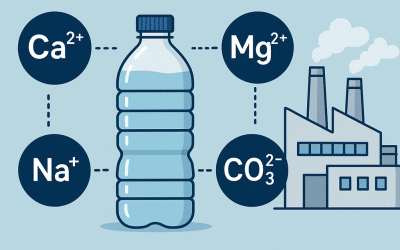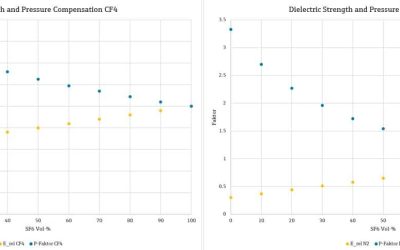Wink of Knowledge: Viscosity measurement by differential pressure and flow rate
This knowledge wink deals with the viscosity determination of media above the measuring range of the dedicated viscosity sensor VLO-M2. Various media were measured in a wide temperature range, whereby viscosities > 400 mPa∙s were achieved. An FLT-M1_i1 Coriolis sensor was used for the flow measurement. The Coriolis measuring principle is ideally suited for this method thanks to the precisely shaped measuring tube over which the pressure drop is measured.
Why this test?
The viscosity of media has long been an important parameter for lubricants. In the meantime, further direct applications of viscosity have been added in areas such as paints/paints or care products. However, indirect applications such as the quality measurement of oils are also becoming increasingly important. We are presenting a viscosity measurement based on the “old” principle of differential pressure, but rethought using precise Coriolis measurement technology.
What is a Wink of Knowledge?
Do you need to quickly measure, draw or do/build something? The speed with which the result may be achieved counts more than the perfect (scientific) approach. For this reason, we have introduced the Wink of Knowledge. Science in the wink of an eye, so to speak. We don’t want to prove anything scientifically. We simply want to quickly demonstrate something pragmatically. If you are interested, we would be happy to discuss these results in more detail with you and your project.
Results
An FLT-M1_i1 was equipped with a pressure sensor at the inlet and a pressure sensor at the outlet of the device (see Figure 1). The measured variables flow rate, inlet pressure, outlet pressure and temperature were recorded for different media and temperatures.
Figure 1:Test setup consisting of two pressure sensors, the FLT-M1_i1 Coriolis mass flow sensor and a temperature-controlled circulation system

The dynamic viscosity 𝜂 of the medium can be calculated from the measured variables flow rate Q, pressure difference Δp and the geometric variables of the Coriolis measuring tube, length L and radius R, using Hagen-Poiseuille’s law:
An additional correction factor had to be used to correct for the effects of fluid block and pipe curvature. The viscosity calculated with this simple formula was then plotted against the reference values:
Figure 3: Viscosity according to measurements compared to the reference values
The measurements fit the ideal Hagen-Poiseuille law very well over a wide range. Deviations occur primarily at very high or very low medium temperatures. These are probably due to a temperature gradient along the pipe and a temperature difference between the medium and the environment, which makes it impossible to determine an “actual” temperature. This also results in an uncertainty in the reference temperature and thus the reference viscosity. These errors are ±10% in this simple test. However, this can be greatly improved by calibrating and/or restricting the temperature range. A successful and highly developed implementation of the measuring principle for measuring the quality of crude oil has already been carried out by a partner of TrueDyne Sensors AG:
Flow rate and density are included “free of charge” as valuable additional measured variables.
Conclusion
Which sensors were used?
viscosity sensor VLO-M2
- Click here to learn more about our sensor
Flow sensor FLT-M1
- Click here to learn more about our sensor
Sensors that might interest you
Gases
Viscosity
Applications that might interest you

From volume (l)
to mass (kg)
More Winks of Knowledge that might interest you
Wink of Knowledge: Mineral content of water
Wink of Knowledge: Mineral content of water The mineral content of water plays a key role — both in terms of beverage quality and industrial processes. While it often causes problems such as calcification or corrosion in industry, it promotes health and influences...
Wink of Knowledge: Measuring the density and viscosity of ink in industrial processes
Wink of Knowledge: Measuring the density and viscosity of ink in industrial processesDensity and viscosity measurements of ink for inkjet printers using the VLO-M2 viscosity sensor show a high degree of consistency with control measurements in laboratory analyzers...
Wink of Knowledge: Concentration measurement of SF₆ in insulation gas mixtures for power transformers
Wink of Knowledge: Concentration measurement of SF₆ in insulation gas mixtures for power transformersWhat is a Wink of Knowledge? Do you need to quickly measure, draw or do/build something? The speed with which the result may be achieved counts more than the perfect...
Winkle of Knowledge: Concentration measurement protein
Winkle of Knowledge: Concentration measurement protein This knowledge wink is dedicated to measuring the concentration of protein in water using the physical parameters of density and viscosity. Commercially available whey protein was used as an example, the...
Wink of Knowledge: Improved methanol/water concentration model for fuel cells
A new concentration model for methanol / water mixtures is shown. The model covers a wide range of process conditions: At temperatures of 0-80°C, concentrations of 0-100% can be calculated from the density with an accuracy of ± 0.2%. The direct methanol fuel cell (DMFC) is an important application for this as the power source of the future.
Wink of Knowledge: smart mass flow controller
Discover the future of precise gas flow control with the innovative Smart Mass Flow Controller from TrueDyne Sensors AG. In cooperation with IST AG, we have developed a pioneering device capable of measuring density, temperature, pressure and mass flow – all in one sensor. Designed for flexibility and accuracy, this controller automatically adapts to different pure gases and binary gas mixtures, ensuring optimal performance. Learn more about this groundbreaking solution at TrueDyne Sensors AG.














